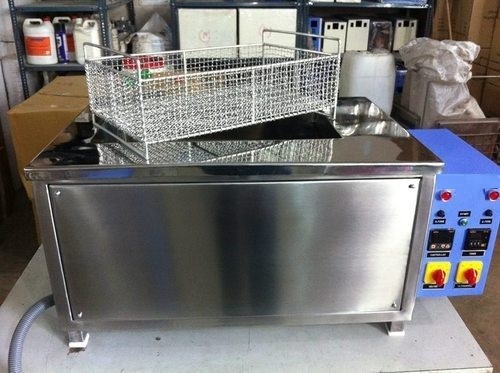Ultrasonic cavitation is a proven cleaning technique utilized throughout industries to quickly remove dirt, grime, grease and other contaminants from various products, ranging from delicate laboratory equipment to surgical instruments to iron castings and forgings. Ultrasonic cleaning occurs in a cleaning solution wherein generator-powered ultrasonic transducers create billions of minute bubbles that implode with massive force upon coming in contact with objects being cleaned. Several factors can increase the efficiency of ultrasonic cleaning, among which the most veritable is temperature.
HOW DOES TEMPERATURE INFLUENCE THE EFFICACY OF CLEANING – AN OVERVIEW

For an ultrasonic cleaning system to be effective, it must distribute ultrasonic cleaning agents evenly, have a strong cleaning action, as well as be able to effectively remove contaminants. 64 percent of boiling point is the best temperature for ultrasonic cleaning, according to conventional ultrasonic theory. As long as this formula has been in use for decades, it is unlikely to play a significant impact in establishing optimal operating temperatures. The cleaning agent’s effectiveness, not the ultrasonic cleaning technology, is more likely to influence bath temperatures. Temperature is a critical factor in the performance of each cleaning solution. A specialized ultrasonic cleaning procedure normally requires this temperature.
However, it’s important to keep in mind that while increasing fluid temperature will increase the dispersion of ultrasonic cleaning action in the tank, it can also decrease the scrubbing force. It has been found that as the temperature of the bath rises above 80 degrees Fahrenheit (~27 degrees Celsius), the scrubbing action becomes more evenly dispersed but less effective than when the frequency is increased. Also worth noting is that even while ultrasonic cavitation loses its physical scouring ability at higher temperatures, the cleaning agent’s ability to do its job is enhanced. The drop in ultrasonic force has thus been overcome. When the ultrasonic cleaner is used in conjunction with a certain cleaning chemical, it is possible to relax the bond strength between the portions of the object being cleaned and the contaminant at hand, resulting in a cleaner that is more effective overall. As a result, even with less scrubbing force, pollutants can be removed from a surface using ultrasonic energy.
BATH TEMPERATURES AND CLEANING – SOME CRUCIAL POINTERS
- Fluids that are at 65 percent of their Boiling Point operate best for ultrasonic cleaning, but this number changes over time.
- When the Boiling Point is exceeded, the cleaning system’s scrubbing power decreases, but the force distribution improves.
- In most cases, the temperature ranges from 130 to 180 degrees Fahrenheit (54 to 82 degrees Celsius) are used in ultrasonic cleaning machines.
- Acidic cleaning agents should not be overheated. Thus, when acidic material is utilized, it is viable to use the lowest temperatures possible to minimize the potential damage to the tank.
In conclusion, temperatures alter the efficacy of cleaning in various ways. In addition to bath temperatures, factors like ultrasonic frequency, maintenance and other functions also influence the efficiency of the cleaning.


